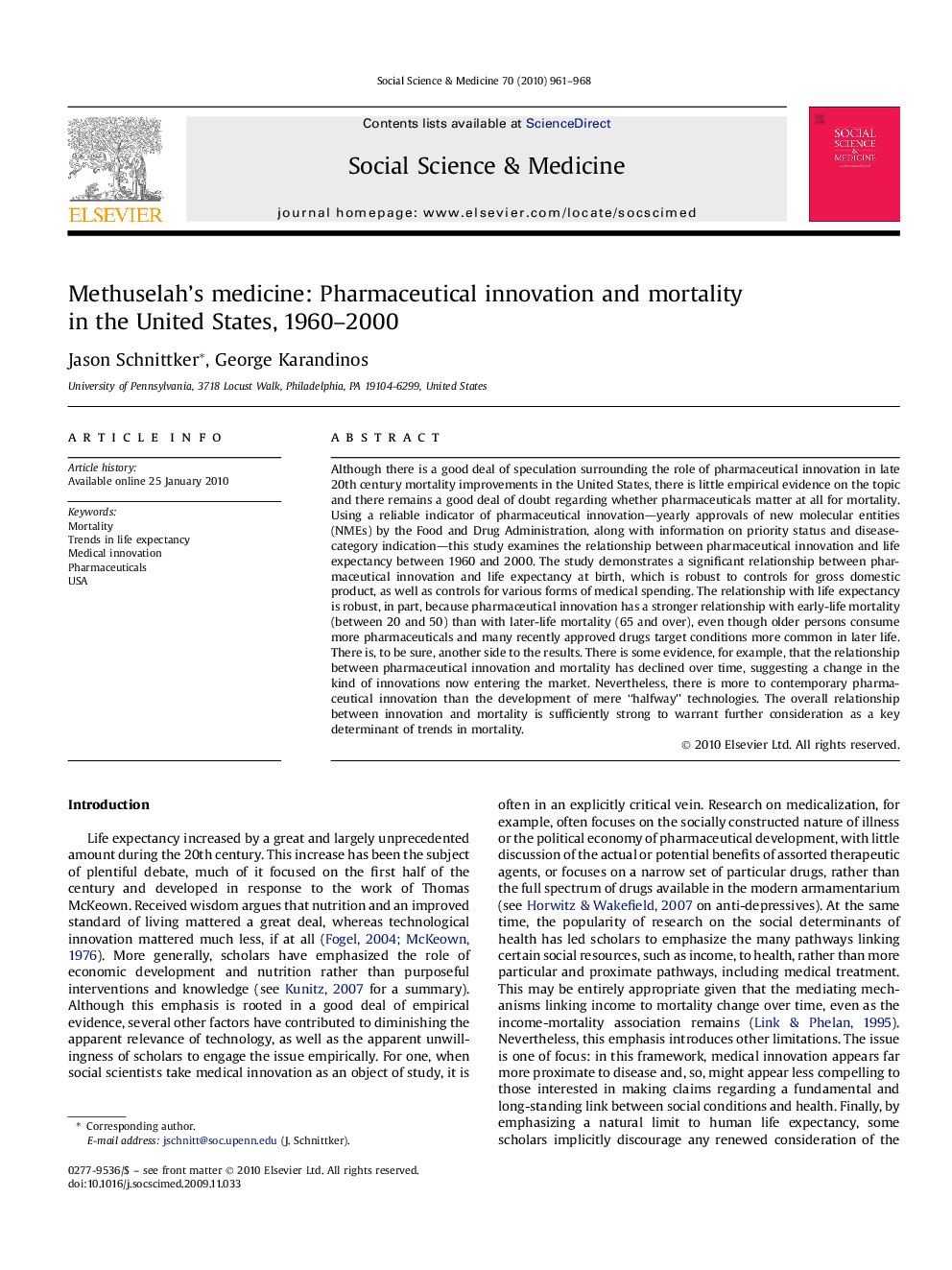| Article ID | Journal | Published Year | Pages | File Type |
|---|---|---|---|---|
| 953182 | Social Science & Medicine | 2010 | 8 Pages |
Although there is a good deal of speculation surrounding the role of pharmaceutical innovation in late 20th century mortality improvements in the United States, there is little empirical evidence on the topic and there remains a good deal of doubt regarding whether pharmaceuticals matter at all for mortality. Using a reliable indicator of pharmaceutical innovation—yearly approvals of new molecular entities (NMEs) by the Food and Drug Administration, along with information on priority status and disease-category indication—this study examines the relationship between pharmaceutical innovation and life expectancy between 1960 and 2000. The study demonstrates a significant relationship between pharmaceutical innovation and life expectancy at birth, which is robust to controls for gross domestic product, as well as controls for various forms of medical spending. The relationship with life expectancy is robust, in part, because pharmaceutical innovation has a stronger relationship with early-life mortality (between 20 and 50) than with later-life mortality (65 and over), even though older persons consume more pharmaceuticals and many recently approved drugs target conditions more common in later life. There is, to be sure, another side to the results. There is some evidence, for example, that the relationship between pharmaceutical innovation and mortality has declined over time, suggesting a change in the kind of innovations now entering the market. Nevertheless, there is more to contemporary pharmaceutical innovation than the development of mere “halfway” technologies. The overall relationship between innovation and mortality is sufficiently strong to warrant further consideration as a key determinant of trends in mortality.
